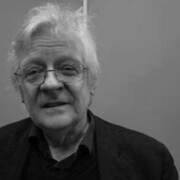Barry Miles (1)
Author of Paul McCartney: Many Years From Now
About the Author
Barry Miles was the chairman of the Youth Campaign for Nuclear Disarmament in the early 1960s.
Works by Barry Miles
I Want to Take You Higher: The Psychedelic Era, 1965-1969 (Rock & Roll Hall of Fame & Museum) (1997) 82 copies, 2 reviews
William S. Burroughs: A Bibliography, 1953-73 Unlocking Inspectors Lee's Word Hoard (1978) — Author — 16 copies
Better Books / Better Bookz: Art, Anarchy, Apostasy: Counter-Culture & the New Avant-Garde (2019) 2 copies, 1 review
fusion is 1 copy
Associated Works
Free Press: Underground and Alternative Publications, 1965-1975 (2006) — Préface, some editions — 36 copies, 2 reviews
200 Trips from the Counter-Culture: Graphics and Stories from the Underground Press Syndicate (2006) — Preface, some editions — 17 copies, 1 review
Real English tea made here [sound recording] — Editor — 1 copy
Tagged
Common Knowledge
Members
Reviews
Lists
Awards
You May Also Like
Associated Authors
Statistics
- Works
- 52
- Also by
- 7
- Members
- 3,602
- Popularity
- #7,031
- Rating
- 3.6
- Reviews
- 36
- ISBNs
- 200
- Languages
- 17















